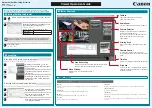
Security Restrictions
You can issue the STOP RDF command if you are a member of the super-user group that initialized
RDF and have a remote password from the RDF primary system to the backup.
RDF State Requirement
You can issue the STOP RDF, DRAIN and STOP RDF, REVERSE commands only while RDF is
running and update is on.
Usage Guidelines
The decision to stop RDF is a management decision that should be carefully planned and
performed. Operators should never issue the STOP RDF command strictly on their own initiative.
To execute a planned RDF shutdown, you should generally use the STOP TMF command rather
than STOP RDF. Issue the STOP TMF command at the primary system while the communications
lines are up. In addition to stopping TMF, this action stops all RDF processes and saves the
context of each process in a file. Alternatively, if you have multiple applications running on your
primary system and not all of the databases are RDF-protected, then stopping TMF to coordinate
a planned and synchronized shutdown may not be possible. In this case, you can perform an
ordered stop (do not perform a TACL stop that would then cause in-flight transactions to be
aborted by TMF) of the applications updating the RDF-protected database, and when you are
certain they have completed, then issue the STOP RDF, DRAIN command. Because your
applications have stopped, then the RDF-protected database on the primary system is closed
and is in the same state as if TMF was stopped. See
“Critical Operations, Special Situations, and
Error Conditions” (page 121)
for a discussion on how this operation may be of value to you.
For information about when to use the STOP RDF command and how it affects the primary and
backup databases, see
“Stopping RDF” (page 132)
.
There are three ways to stop RDF:
•
Issue a STOP TMF command at the primary system.
When you issue the TMFCOM command STOP TMF, RDF also shuts down after RDF
encounters the TMF shutdown record in the MAT. This method ensures that the primary
and backup databases are logically identical with one another when RDF stops. When you
restart RDF, the context file directs RDF where to resume.
•
Issue a STOP RDF command at the primary system.
If the decision has been made to stop RDF without stopping TMF, issue a STOP RDF
command at the primary system. RDF stops immediately after all RDF processes save context
information in the context file.
•
Issue a STOP RDF command at the backup system.
You should use this method of stopping RDF only if one of the following two conditions is
true:
— The RDF monitor process is not running on the primary system.
— All communications lines to the primary system are down.
If the decision has been made to stop RDF on the backup system, issue a STOP RDF
command at the backup system. All processes running on the backup system write
context information to a context file and then stop.
If the communications lines between the primary and backup systems are up, a STOP
RDF command issued at the backup system fails, and RDFCOM displays an error
message.
RDFCOM Commands
251
Содержание NonStop RDF
Страница 68: ...68 ...
Страница 186: ...186 ...
Страница 260: ...260 ...
Страница 278: ...278 ...
Страница 284: ...284 ...
Страница 290: ...290 ...
Страница 308: ...308 ...
Страница 322: ...322 ...
Страница 336: ...336 ...
Страница 348: ...348 ...
Страница 464: ...464 ...
Страница 478: ......
















































